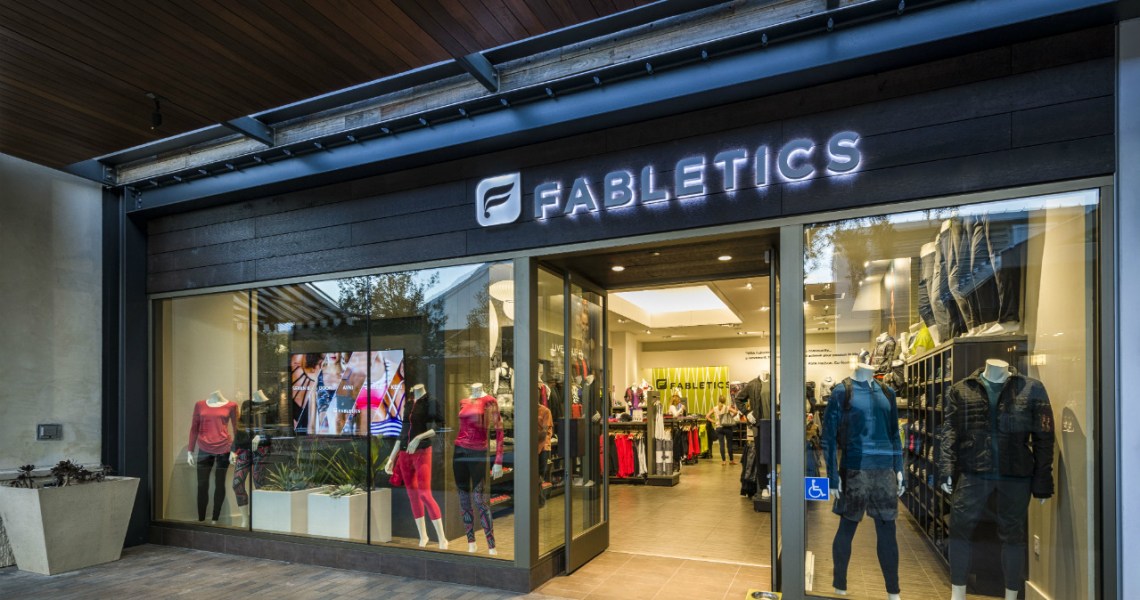Fabletics is one of the rare fashion companies with a large physical footprint that’s managed to survive to this point without laying off or furloughing any of its retail employees. Instead, it quickly launched a restructuring and training program for its 700 store employees, which involved shifting them to other parts of the business. Now, Fabletics is hoping that its decision to keep those employees on board will make the store re-opening process much easier.
Layoffs have been prevalent at brands from Gap to Rent the Runway to Everlane, which has helped lighten the financial load so that they can remain operational. But that’s at the cost of difficulties down the road — as stores re-open those brands have to hire a new workforce or attempt to rehire old employees. Even brands that furloughed their employees may face difficulties, since people who are furloughed are not legally obligated to return to work once taken off furlough.
Fabletics began having internal discussions about retail closures on Mar. 1 and officially closed all stores on Mar. 11. The average Fabletics retail associate makes about $12 an hour, and Ron Harries, svp and head of retail at Fabletics, said no one has taken a pay cut during this time. Despite operating in states that are allowing retail re-openings like Arizona and Florida, Fabletics has not re-opened any of its current stores and doesn’t have a specific date set for any openings just yet. It plans to open stores on a rolling basis, starting in lower-risk areas first.
Fabletics enlisted its store associates in two separate programs, one for retail leaders like store managers and another for retail associates. The leaders were put through a condensed version of an existing manager training program — it’s typically six weeks, but they completed it in three. Fabletics put all 176 retail leaders through the program between mid-March and mid-May, teaching them important management skills. Every participant had to prepare a capstone presentation based on those skills to graduate the program. The program was led by the brand’s internal corporate training director, conducted remotely via Zoom and focused on managing small teams.
The plan, according to Harries, was to give those retail managers a way to improve their skills, which was best use of their time which waiting for Fabletics’ 42 stores to re-open.
“Then we had another initiative for the retail associates, who we wanted to have assist with global member services,” said Harries. “We started having them take phone calls and chats, fielding questions about shipping, issues with memberships — all those things normally handled by our global member services team. That started in mid-April, and we’ve already trained 130 retail associates in these new skills.”
Those employees are supplementing the existing customer service team, which is seeing an increased workload due to a higher e-commerce demand.
Ad position: web_incontent_pos1
Harries said that from May 1 to May 11, retail employees fielded 12,000 calls over 4,050 hours. Once stores re-open, Harries said those associates will be moved back to their previous positions. Some, however, may become “omni associates,” shifting between Fabletics’ channels of brick-and-mortar while working in-store, or e-commerce and memberships while working from home. Having more employees who can both work in brick-and-mortar stores and answer customer service questions online is something Harries said the brand has wanted for a while.
Keeping employees on is expensive. Harries said Fabletics has only been able to swing it because memberships, which at $50 a month are a central part of the brand’s business, have remained strong and recently passed the 2 million mark. According to Harries, Fabletics has been trying to avoid the fate of some other brands whose layoffs has made the path to re-opening difficult.
“One of our district managers at the Kenwood Mall in Cincinnati took us all on a video tour of the mall, and looking at all of the stores there that had re-opened, the experience was awful,” Harries said. “The interactions were bad, the customer service was poor, the preparedness was disappointing. They were understaffed. If you laid off or furloughed employees, how many are going to come back when you need them? It’s tough to keep people inspired and passionate in a situation like that.”
Fabletics’ approach mirrors that of other brands like Suitsupply. CEO Fokke de Jong said that keeping Suitsupply’s employees on payroll made the transition to re-opening smoother. Suitsupply also spent the early days of store closures moving employees to other areas of the business.
Retail is already a difficult place to be, and with brands hungry to re-open their stores and invite foot traffic, having the shortest path from re-opening to running at full capacity is paramount to retail life after coronavirus.
Ad position: web_incontent_pos2
“We’ve been re-opening gradually around the world for about two months now,” said de Jong. Suitsupply operates more than 100 stores in more than 25 countries. “Having our own employees back has been really helpful for that, and we’ve been being really cautious, taking their temperatures when they show up to work, cleaning regularly, having hand sanitizer available. Our business is very personal, so it was important to have people we trust.”




